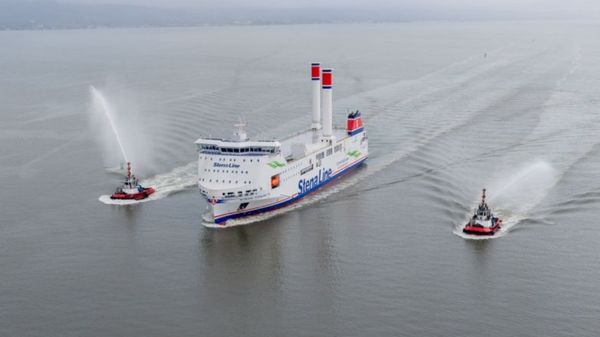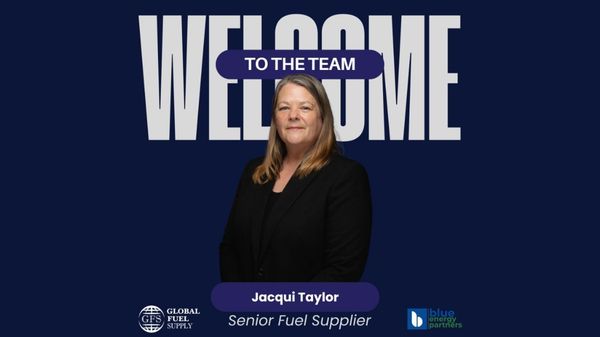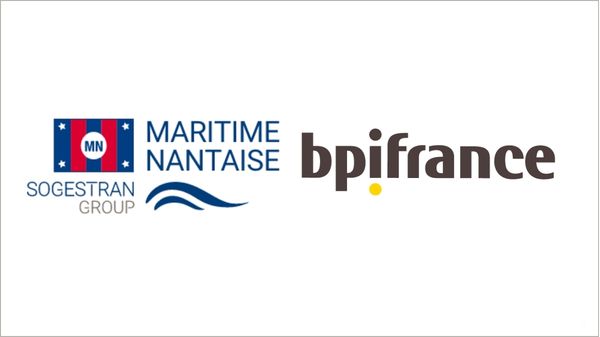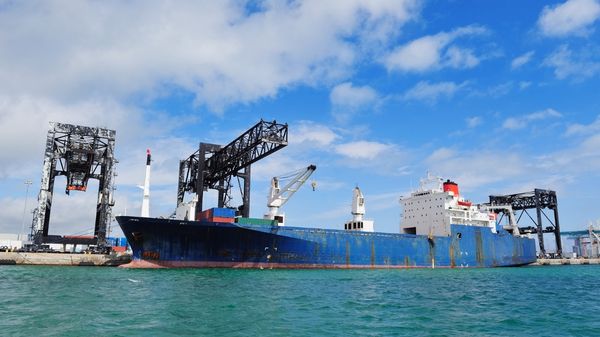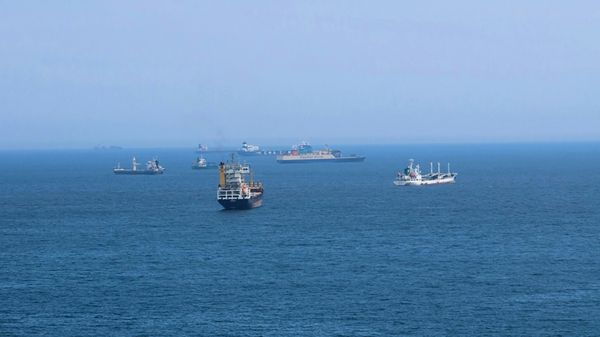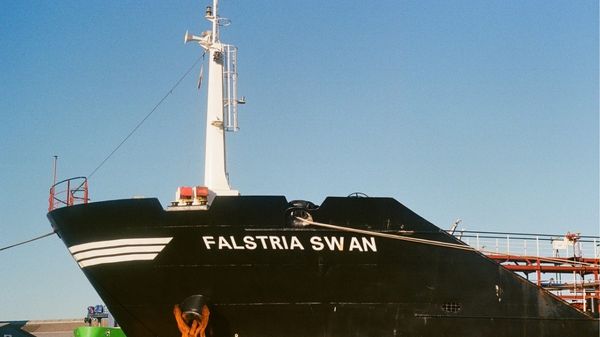U.S. ocean shipping company
Horizon Lines, Inc. has revealed that its average bunker costs declined during the second quarter of 2014 in comparison with the corresponding period last year.
Vessel fuel costs averaged $636 per metric tonne in the second quarter, down $23, or 3.5%, on the average price of $659 per tonne recorded for the same quarter in 2013.
The fuel data was revealed today (July 30) by Horizon Lines, Hawaii's second largest ocean shipper, in its results for the fiscal second quarter ended June 22, 2014.
Second Quarter 2013 Results
The second-quarter net loss from continuing operations totaled $1.6 million, or $0.04 per share, on a weighted average of 40.8 million shares outstanding. This compares with a year-ago net loss of $0.9 million, or $0.02 per share, on a weighted average of 35.6 million shares outstanding. On an adjusted basis, the second-quarter net income from continuing operations totaled $0.4 million, or $0.01 per share, compared with an adjusted net loss of $0.1 million, or $0.00 per share, a year ago. The 2014 and 2013 second-quarter adjusted net results reflect the same items impacting adjusted EBITDA, as well as the non-cash accretion of payments associated with certain legal settlements and the tax impact of adjustments. Additionally, the adjusted net loss for the 2013 second quarter excludes the non-cash accretion of the then estimated multi-employer pension plan withdrawal liability related to the company's 2013 move from Elizabeth, New Jersey to Philadelphia, Pennsylvania. The withdrawal liability was satisfied in the fourth quarter of 2013.
EBITDA totaled $29.5 million for the 2014 second quarter, compared with $28.8 million for the same period a year ago. Adjusted EBITDA for the second quarter of 2014 was $31.4 million, an increase of 7.4% from $29.2 million for 2013. EBITDA and adjusted EBITDA for the 2014 and 2013 second quarters were impacted by the same factors affecting operating income. Additionally, 2014 and 2013 adjusted EBITDA reflect the exclusion of $45,000 and $114,000, respectively, of non-cash gains on marking the conversion feature in the company’s convertible debt to fair value.
Operating income for the second quarter totaled $16.3 million, compared with $16.0 million in 2013. The increase in operating income was largely driven by greater container volumes and the associated improvement in fuel recovery, partially offset by lower container rates and increases in contractual labor and other expenses. Second-quarter 2014 GAAP operating income includes charges totaling $1.9 million associated with a legal settlement, certain legal expenses and employee severance. Second-quarter 2013 GAAP operating income includes expenses totaling $0.5 million primarily associated with the return of excess equipment related to the 2013 fourth-quarter service change in Puerto Rico. Excluding these items, second-quarter 2014 adjusted operating income totaled $18.2 million, compared with $16.5 million a year ago.
Second-quarter operating revenue improved 8.3% to $281.2 million from $259.8 million a year ago. The factors driving the $21.4 million revenue increase were a $19.8 million volume expansion described above, $5.7 million rise in non-transportation services revenue, and a $3.2 million increase in fuel surcharges. Non-transportation revenue was higher due to Hawaii automobile processing, an increase in terminal services from an extension of the seafood season in Alaska that continued into the second quarter, as well as growth associated with certain transportation services agreements. These positive items were partially offset by a $7.3 million decrease in container revenue rates resulting from a shift in cargo mix and increased competition.
Container volume for the 2014 second quarter totaled 62,216 revenue loads, up 10.8% from 56,159 loads for the same period a year earlier. Container volumes rose in each of the company's markets. Volume improvement in the Hawaii market was primarily due to modest growth in the Hawaii economy, including construction materials and tourism, as well as an increase in automobile shipments. The volume increases in the Puerto Rico market were due to the June 2013 addition of a bi-weekly Jacksonville, Florida sailing to the southbound service between Houston, Texas and San Juan, Puerto Rico, as well as volume gains in both the northbound and southbound service between Philadelphia, Pennsylvania and San Juan. These volume increases were partially offset by volume declines resulting from new competition that entered the Houston to San Juan service in May 2013. The company also experienced marginal volume increases in the Alaska market. Unit revenue per container totaled $4,080 in the 2014 second quarter, compared with $4,240 a year ago.
Second-quarter unit revenue per container, net of fuel surcharges, was $3,128, down 3.5% from $3,243 a year ago.
Commenting on the results,
Steve Rubin, Interim President and Chief Executive Officer, said: "Horizon Lines second-quarter adjusted EBITDA increased 7.4% from the same period a year ago, driven primarily by higher revenue container volumes and improved fuel recovery. The positive factors driving adjusted EBITDA growth were partially offset by lower container rates and contractual labor and other expense increases."
"An 8.3% improvement in operating revenue versus the second quarter of 2013 was generated largely by a 10.8% revenue container volume increase across our three markets,” Mr. Rubin said. “In addition, growth in non-transportation services revenue in our Alaska market resulted from a protracted seafood season. These favorable variances were partially offset by a 3.8% decrease in average revenue per container. The decline in our container rates was primarily due to a shift in cargo mix to include more automobiles and a change in overall market conditions."
Six-Month Results
For the first half of fiscal 2014, operating revenue increased 5.7% to $533.2 million from $504.3 million for the same period in 2013. EBITDA totaled $34.4 million compared with $37.2 million a year ago. First-half 2014 adjusted EBITDA totaled $38.1 million, compared with $42.9 million for the same period in 2013. The $4.8 million decrease in adjusted EBITDA was primarily due to higher fuel and labor costs associated with dry-docking transits, as the positive impact from volume gains was largely offset by lower rates, net of fuel. The net loss from continuing operations for the 2014 six-month period totaled $27.9 million, or $0.69 per share on 40.4 million weighted average shares outstanding, compared with a net loss of $20.9 million, or $0.59 per share on 35.2 million weighted average shares outstanding, for the prior year. The adjusted net loss from continuing operations for the 2014 six-month period totaled $23.8 million, or $0.59 per share, compared with an adjusted net loss from continuing operations of $14.6 million, or $0.41 per share, for the comparable year-ago period.
Outlook
In its outlook for 2014, Horizon Lines said: "We expect 2014 revenue container loads to be above 2013 levels. This projected volume growth takes into consideration the estimated impacts of a competitor that entered the Puerto Rico Gulf service in May 2013, as well as a second vessel being added by a competitor in the Hawaii service during the fourth quarter of 2014, partially offset by the full-year impact of adding a bi-weekly Jacksonville sailing to our southbound service between Houston, Texas and San Juan, Puerto Rico.
Overall, container rates are expected to be below 2013 levels due to competitive market conditions and a slight shift in cargo mix, particularly an increase in automobile volume. The vessel capacity added in Puerto Rico in 2013 will continue to impact rates, and the new vessel capacity expected to be added in Hawaii in 2014 could also impact rates as well.
"We will experience increases in expenses associated with our revenue container volumes, including our vessel payroll costs and benefits, stevedoring, port charges, wharfage, inland transportation costs, and rolling stock costs, among others. Although the number of vessels being dry-docked in 2014 is less than 2013, the costs associated with repositioning vessels and expenses related to spare vessels will slightly exceed 2013 levels. However, the majority of costs associated with repositioning vessels was incurred in the first half of 2014 whereas the costs were more evenly distributed throughout 2013.
"We expect 2014 financial results to approximate 2013 results, with 2014 adjusted EBITDA projected between $90.0 million and $95.0 million, compared with $95.2 million in fiscal 2013.
"Based on our current level of operations, we believe cash flow from operations and borrowings available under the ABL Facility will be adequate to support our business plans. We expect total liquidity during the remainder of 2014 to range from a low of approximately $58.0 million during the third quarter, then build over the balance of the year and end 2014 at approximately $78.0 million."


